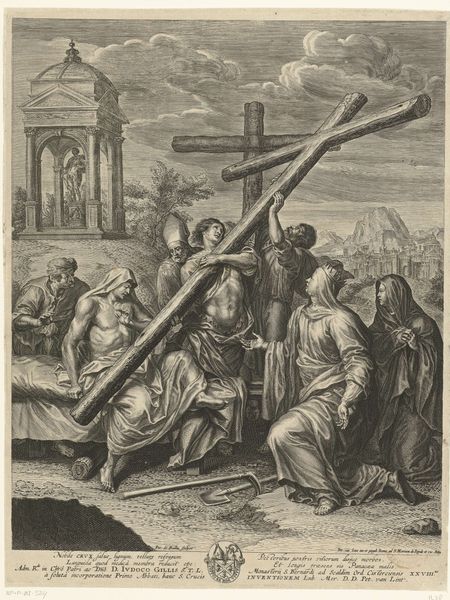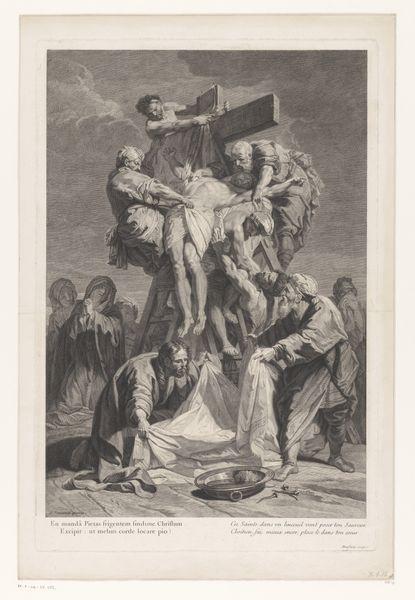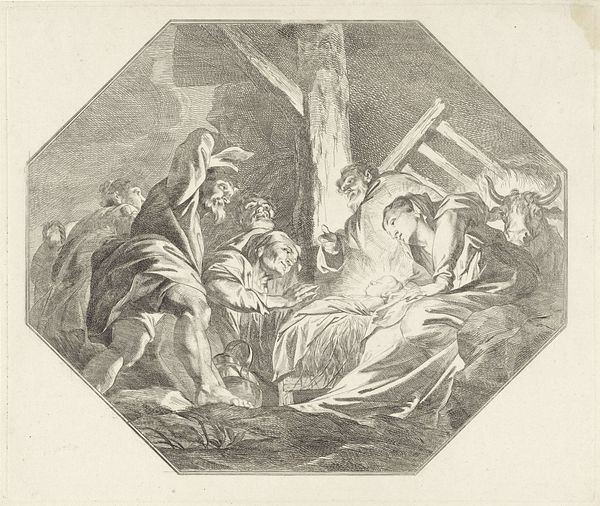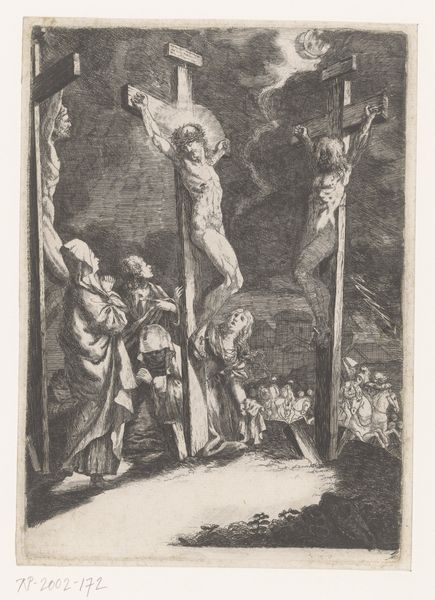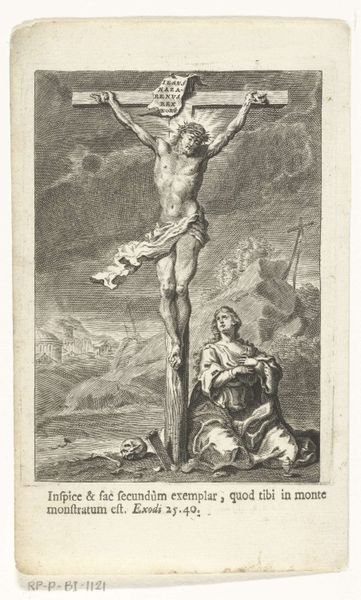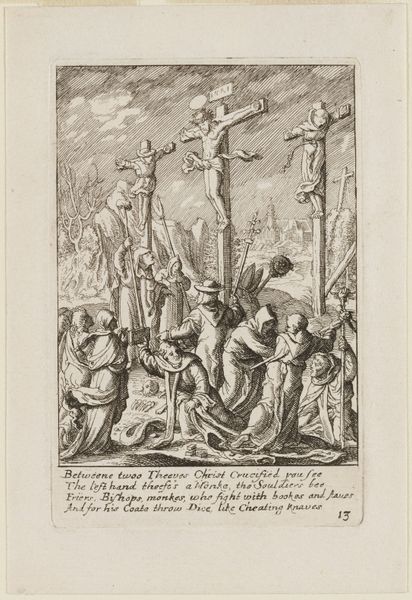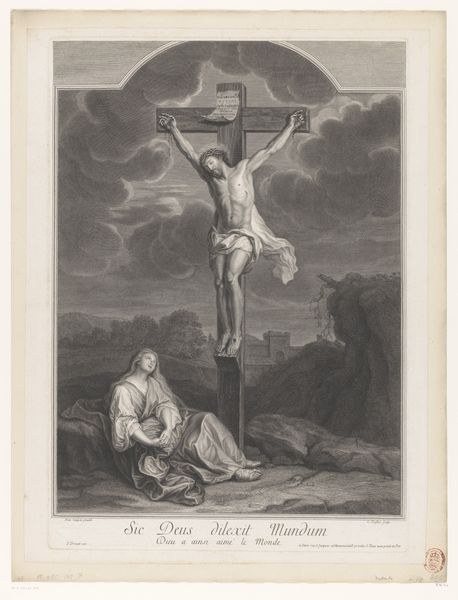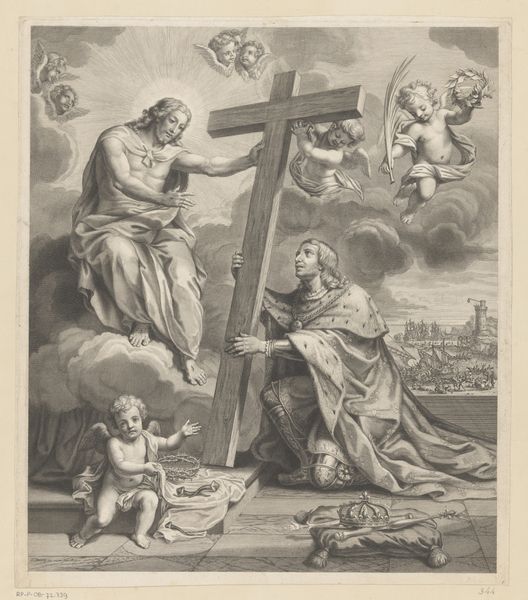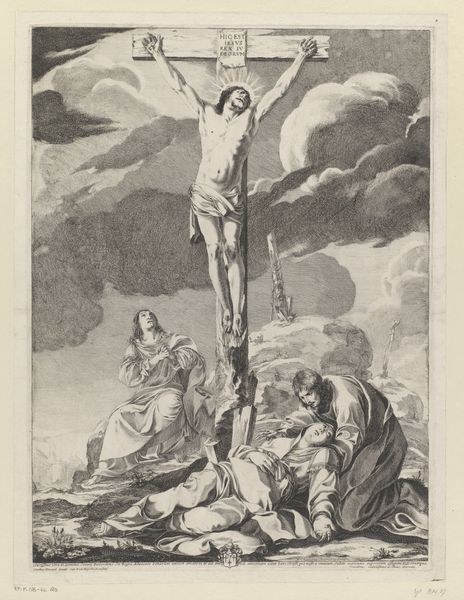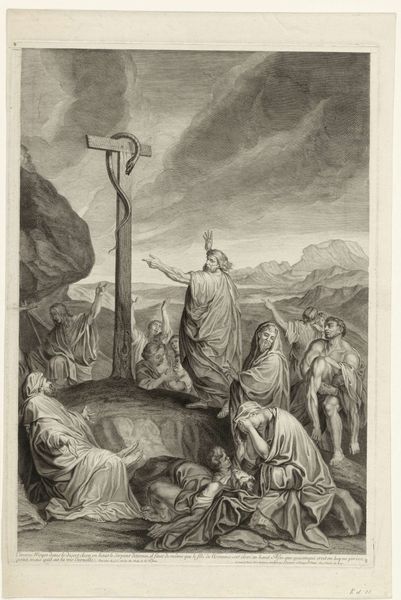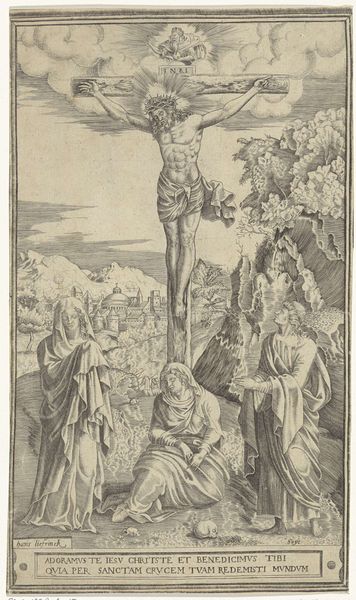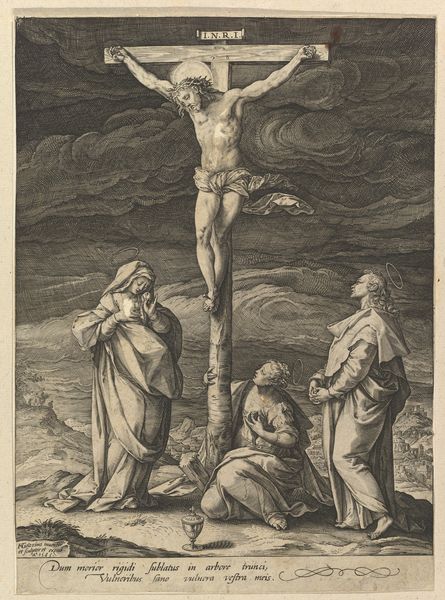
print, engraving
#
baroque
# print
#
landscape
#
figuration
#
history-painting
#
engraving
Dimensions: height 450 mm, width 493 mm
Copyright: Rijks Museum: Open Domain
Augustin Jacques Renard de Saint-André created this engraving of the crucified Christ in France in the late 17th century. As a print, it would have been relatively affordable and widely disseminated, but at the same time it is dedicated to a noblewoman, the ‘Maréchalle de Crequy.’ So what do we make of this intersection of religious imagery, the print market, and the aristocratic patronage system of the time? The image presents us with a familiar visual code of Christian suffering and salvation. Yet the print medium also invites us to consider the social and political functions of religious imagery in early modern France. Was it a tool of social control? A genuine expression of popular piety? Or a means for artists to secure commissions and build their careers? To understand this print better, we might research the artist's biography, the patronage networks of the French court, and the religious culture of the period. By exploring these historical contexts, we can appreciate how artistic meaning is always shaped by the social forces of its time.
Comments
No comments
Be the first to comment and join the conversation on the ultimate creative platform.

